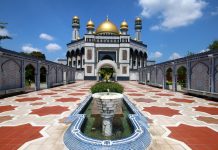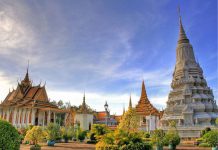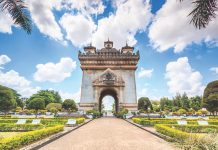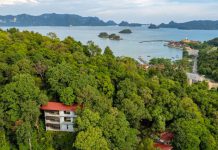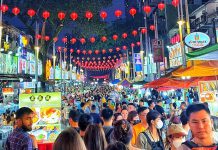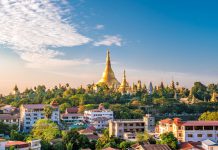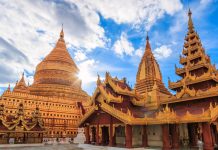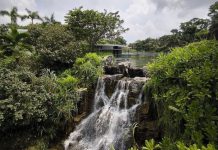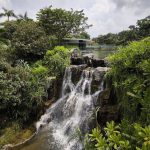Mention Orchard Road and invariably, shopping comes to mind. But what if we told you that long before the malls and shopping centres dominated the famous shopping street, the area was actually a fertile ground for cash crops such as nutmeg, gambier and pepper, and even housed three cemeteries.
To discover more fascinating stories and history about Orchard Road, go on the self-guided Orchard Heritage Trail, specially curated by the National Heritage Board. The Trail features 71 heritage sites, stretching from Dhoby Ghaut to Tanglin, three thematic routes and 10 trail markers which provide interesting details and lesser known facts about the area.
We recommend starting with the “Orchard Road’s Historical Gems” trail route which brings you to historical landmarks along Orchard Road. The walk starts at the gate of the Royal Thai Embassy and ends on Emerald Hill.
Royal Thai Embassy
370 Orchard Road
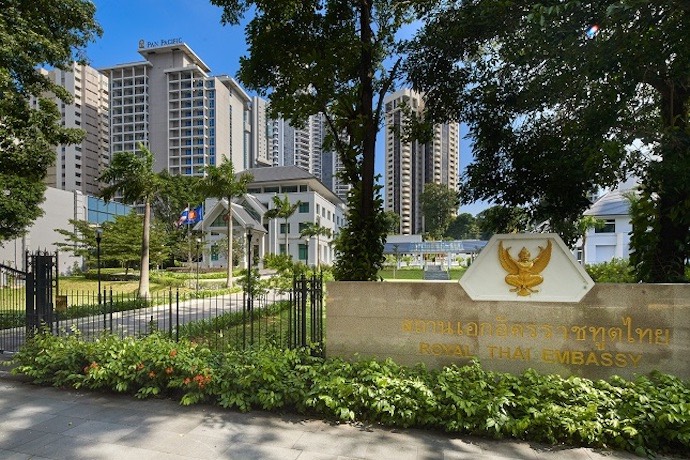
The Embassy was part of the Claymore nutmeg orchard in the 1800s and contained a house called Hurricane Cottage (later Hurricane House). During the late 1800s, Siamese King Chulalongkorn bought Hurricane House and used it as his residence during his visits to Singapore.
Although Hurricane House was sold towards the end of King Chulalongkorn’s reign, the Siamese government purchased a plot at Orchard Road in 1897 where it built the Thai Consulate (now the Royal Thai Embassy) in 1960. The old Embassy building was later rebuilt as a new diplomatic complex that reopened in 2017.
Tang Plaza
320 Orchard Road
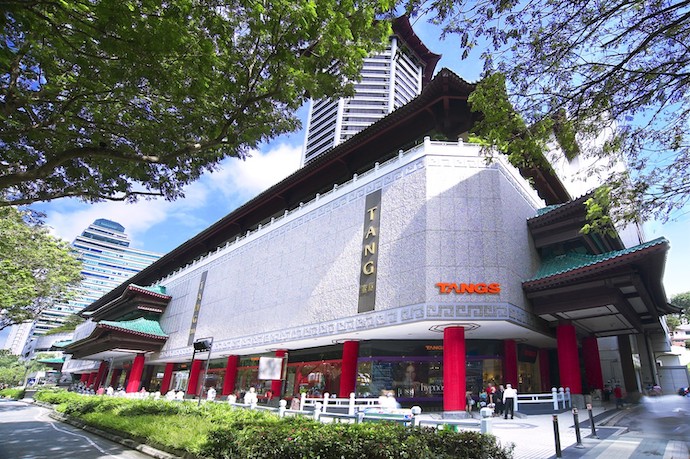
Located at the corner of Orchard Road and Scotts Road, CK Tang was Orchard Road’s first department store. Businessman Tang Choon Keng opened the department store in 1958 and it quickly became a landmark shopping destination.
The original building was replaced by the larger Tang Plaza in 1982, and some of the distinctive features of the original building such as the green-tiled roof and red colonnades were incorporated into the design of the new plaza. Today, its 33-storey pagoda-like tower and podium house the Singapore Marriott Tang Plaza Hotel and Tangs department store.
Goodwood Park Hotel
22 Scotts Road
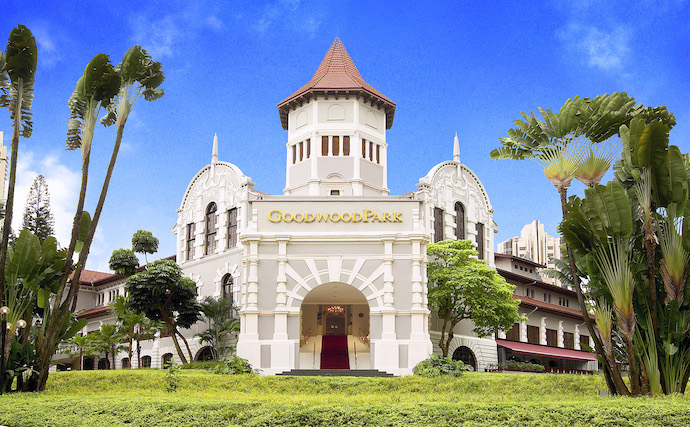
Built in 1900, this Hotel was formerly a German social club called Teutonia Club (Teuton refers to people of German origin). When Germans in Singapore were declared enemies and imprisoned during World War II, the club was confiscated by the British government.
In 1918, the former clubhouse was bought by three Jewish brothers – Morris, Ezekiel and Ellis Manasseh – who renamed it Goodwood Hall after a famous English racecourse. Goodwood Hall became a popular venue for weddings, recitals and balls. The Manassehs then expanded the building in 1929 into Goodwood Park Hotel. The hotel’s notable guests included Queen Beatrix of the Netherlands, Nobel Laureate William Golding and actor Jackie Chan.
In 1947, Ezekiel’s stepson Vivian Bath took over the Hotel. He added more rooms and a kidney-shaped swimming pool, making it the first hotel in Singapore with a pool. In 1968, the Hotel was acquired by Singaporean banker Khoo Teck Puat who made it the flagship hotel of the Goodwood Group, Singapore’s first local hotel chain. The historic Tower Wing of the Hotel was gazetted a National Monument in 1989.
Ngee Ann City
391 Orchard Road
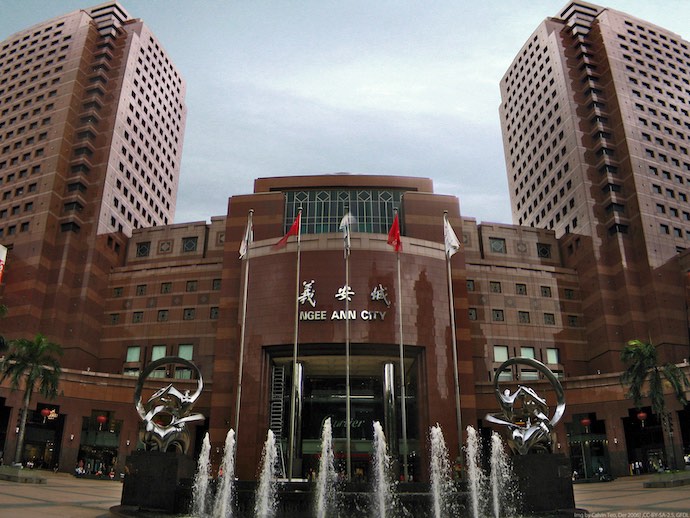
This 29-storey shopping and office complex is located on the site of a former Teochew cemetery called Tai Shan Ting.
When Lien Ying Chow, founder of Overseas Union Bank, became chairman in 1953 of Ngee Ann Kongsi, a charitable foundation formed by the Teochew community, he sought to develop the land owned by the foundation at Orchard Road to raise funds for its charitable and educational activities.
To make way for this development, Ngee Ann Kongsi began exhuming the Tai Shan Ting cemetery from the early 1950s.
The first building to be completed on the site was Ngee Ann Building, which opened in 1957. This 10-storey building housed apartments and shops. Ngee Ann Building was torn down in 1985 and the area redeveloped into Ngee Ann City, which opened in 1993.
The complex is popularly known as “Taka” in reference to its anchor tenant – Takashimaya Department Store.
Mandarin Orchard Singapore
333 Orchard Road
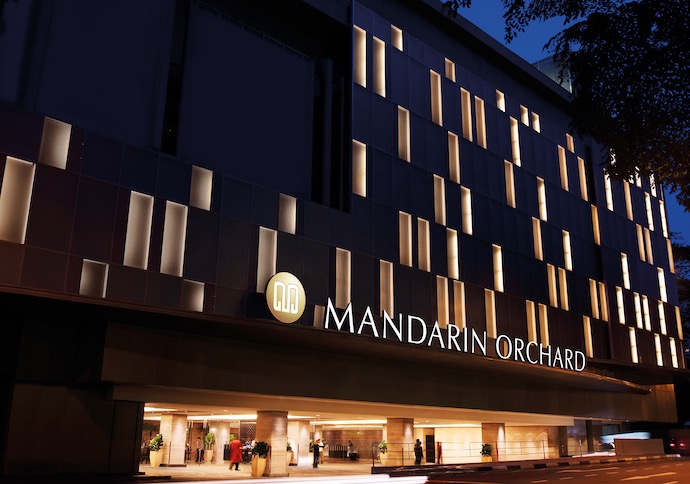
When it opened in 1971 as the Mandarin Hotel, it was the largest hotel in Singapore with 700 rooms and also the country’s tallest building.
The site for the Hotel was purchased in 1964 by former Overseas Union Bank chairman Lien Ying Chow. Lien named the hotel Mandarin after a famous hotel in Hong Kong.
The crowning glory of the 39-storey Hotel was the country’s first revolving rooftop restaurant called Top of the M, housed in a saucer-shaped tower on the Hotel’s rooftop. Its Chatterbox coffeehouse is famous for its chicken rice.
In 1980, a second wing was added to the Hotel. Following extensive renovation works, the Hotel and its four-storey shopping mall, Mandarin Gallery, were reopened in 2009 with new glass facades and updated interiors.
The Heeren
260 Orchard Road
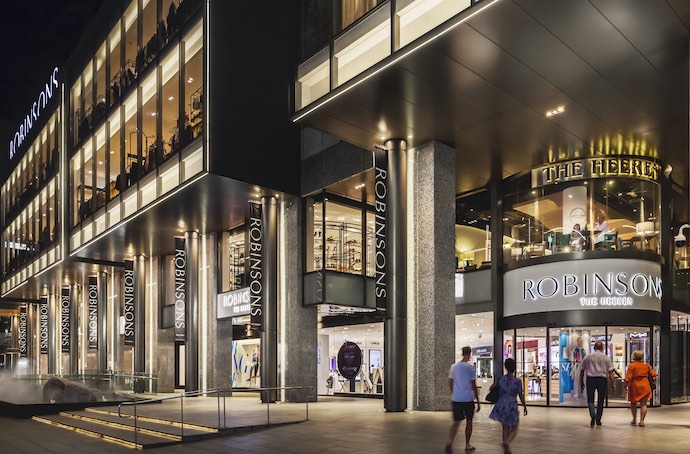
The original Heeren Building was built in 1931 by Melaka-born Peranakan businessman Chee Swee Cheng. It was named Heeren Building after Melaka’s Heeren Street (heeren is Dutch for “gentlemen”). It had shops on the ground floor, and offices and apartments on the upper floors.
The building was demolished in 1990 and replaced by The Heeren, which was completed in 1997. To commemorate its heritage, the building’s owners retained the original Heeren Building’s “torches”, which once stood on the roof. These now flank the rear entrance of The Heeren along Cairnhill Road.
In 2015, The Heeren’s owners marked Singapore’s 50th year of independence by commissioning an artwork by local sculpture Chong Fah Cheong titled Budak-Budak (Malay for “children”) that is installed in front of The Heeren. The sculpture shows children playing on a giant kamcheng, a Peranakan porcelain jar. The children represent future generations, while the jar symbolises the wisdom and culture that are passed down over the generations.
Former Singapore Chinese Girls’ School
37 Emerald Hill Road
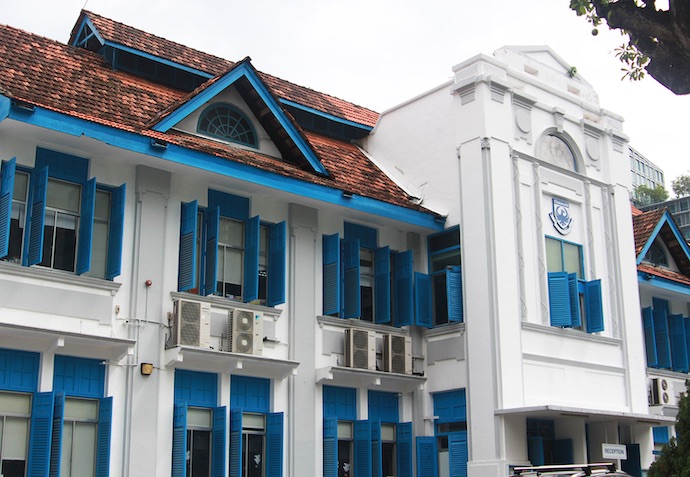
Founded in 1899 by Singaporean doctor Lim Boon Keng, Singaporean lawyer Song Ong Siang and Fujian-born scholar Khoo Seok Wan to provide Chinese girls with modern education, the school was one of the oldest in the area. Setting up a school for girls was considered a radical idea within the Chinese community then, as education was regarded to be unnecessary for girls at that time.
The school was originally located in Hill Street before moving to Dr Lim’s former two-storey home on Emerald Hill in 1926 and operated from there till 1994.
After World War II, the School was opened to students of all races. In 1994, the School relocated to Dunearn Road. The former school building on Emerald Hill was declared a historic site by the National Heritage Board in 1997 and the blue-and-white building currently houses Chatsworth International School.
Emerald Hill
37 Emerald Hill Road
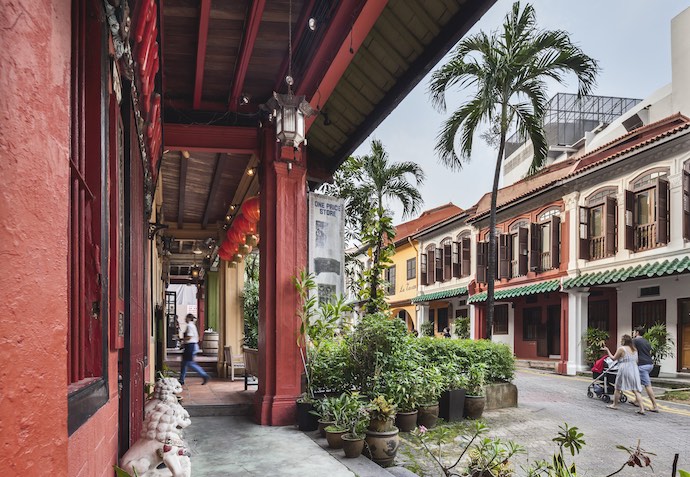
Emerald Hill was the site of a former nutmeg orchard which started to take shape as a residential neighbourhood in the early 1900s. The area was acquired in 1900 by businessmen Seah Eng Kiat and Seah Boon Kang, who then sold smaller parcels of land to new owners to build terrace houses and shophouses.
By the 1930s, a large number of houses at Emerald Hill were occupied by Peranakan families. Peranakans, also known as Straits Chinese or babas (men) and nyonyas (women), are the descendants of early Chinese immigrants who married locals and settled in Southeast Asia.
Many of the buildings at Emerald Hill are traditional shophouses linked by sheltered verandahs known as five-foot ways. The shophouses still retain their pintu pagars, fence-like pairs of revolving doors. Emerald Hill also has number of traditional terrace houses, which blend elaborate European elements such as neo-classical columns with local features such as colourful wall tiles and panels bearing Chinese motifs like flowers and birds.
Emerald Hill was gazetted as a conservation area in 1989.


